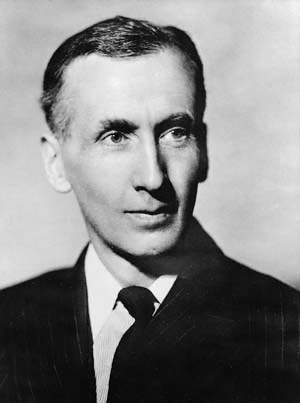Frederick Ogilvie facts for kids
Quick facts for kids
Frederick Ogilvie
FRSE
|
|
|---|---|

Ogilvie in 1939
|
|
| 2nd Director-General of the BBC | |
| In office 19 July 1938 – 26 January 1942 |
|
| Preceded by | John Reith |
| Succeeded by | Cecil Graves and Robert Foot |
| President and Vice-Chancellor of Queen's University Belfast | |
| In office 1935–1938 |
|
| Preceded by | Sir Richard Livingstone |
| Succeeded by | Sir David Lindsay Keir |
| Personal details | |
| Born |
Frederick Wolff Ogilvie
7 February 1893 Valparaíso, Chile |
| Died | 10 June 1949 (aged 56) Oxford, England |
| Nationality | British |
| Spouse |
Mary Helen Macaulay
(m. 1922) |
| Children | 3, including Robert |
| Education | Packwood Haugh School Clifton College |
| Alma mater | Balliol College, Oxford |
Sir Frederick Wolff Ogilvie (born February 7, 1893 – died June 10, 1949) was a very important British leader. He worked in both broadcasting and universities. He was the second Director-General of the BBC, which is like being the main boss of the British Broadcasting Corporation. He held this job from 1938 to 1942. Before that, he was the Vice-Chancellor of Queen's University Belfast from 1934 to 1938. King George VI made him a knight in 1942, so he was called "Sir Frederick."
Contents
Early Life and School
Frederick Ogilvie was born in February 1893 in Valparaíso, Chile. He was the youngest son of Scottish parents. His father, William Maxwell Ogilvie, was an engineer.
Frederick went to Packwood Haugh School and Clifton College. In 1911, he started studying at Balliol College, Oxford. He was very interested in economics from the beginning of his studies.
His studies were stopped by the start of World War I in 1914. He joined the army right away as a second lieutenant. He was sent to France and was badly hurt in a battle in 1915, losing his left arm. Even with this injury, he stayed in the army and became a captain. He left the army in 1919 and went back to Oxford to finish his degree.
His Career Journey
Working in Universities
In 1919, Frederick became an economics teacher at Trinity College, Oxford. The next year, he became a fellow there. A fellow is like a senior member of the college. In 1926, he became a professor of Political Economy at Edinburgh University. He also gave advice on economics to some politicians.
In 1929, he was chosen as a Fellow of the Royal Society of Edinburgh. This is a group that recognizes important scientists and thinkers.
Frederick was one of the first British economists to see how important tourism was. He wrote a book about it called The Tourist Movement (1933). He explained how more money spent on tourism could help that industry grow faster. He also wrote articles about economics and tourism for encyclopedias and journals.
He cared a lot about economic issues in Scotland. He was part of business groups in Edinburgh. In the 1930s, he advised the government on how to help young people find jobs and how to offer education for adults.
In 1934, he became the Vice-Chancellor of Queen's University Belfast. He was also a professor there. He worked at the university for four years.
Leading the BBC
In 1938, Frederick Ogilvie became the second Director-General of the BBC. The first Director-General, John Reith, had done a lot to start the BBC. Frederick stayed in this job until 1942.
His time at the BBC was described as "short, stormy." One good thing he did was hire Lindley Fraser to lead the BBC's German service. This service became very popular in Germany during the war. Some people felt he was not the best at managing a very large organization. He resigned in 1942 and was knighted that same year.
Later Years and Family Life
After leaving the BBC, Frederick worked for the British Council from 1943 to 1945. In 1944, he thought about becoming the editor of a national newspaper. Instead, he became the head of Jesus College, Oxford. He made a much bigger impact there than at the BBC. He used his experience to help the college grow.
From 1945, he also led a group that set wages in the tin box industry. He continued in these roles until he passed away in London in 1949. Queen's University Belfast named a student housing building after him.
Frederick loved music from when he was a child. He was very involved with the Oxford Bach Choir and even led its committee for a while. He also enjoyed outdoor activities.
In 1922, he married Mary Helen Macaulay. She was the daughter of a professor. They had three sons. Their oldest son, James, sadly died in a climbing accident on the Matterhorn mountain. Another son, Robert Maxwell Ogilvie, followed in his father's footsteps and became a fellow at Balliol College in 1957.
Four years after Frederick's death, his wife, Lady Ogilvie, became the head of St Anne's College, Oxford. She lived to be 90 years old.

